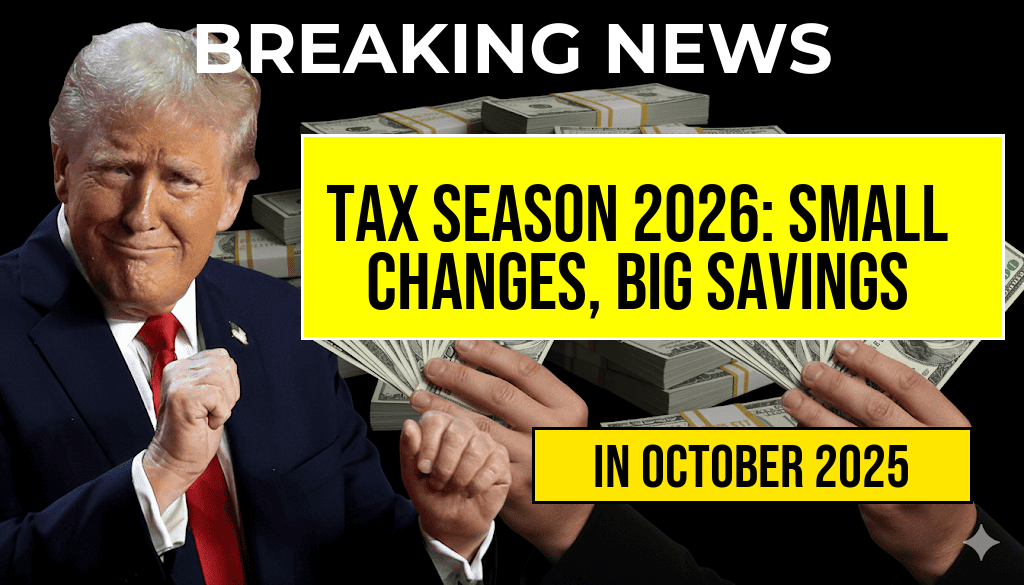As tax season 2026 approaches, many taxpayers are wondering if recent legislative adjustments will impact their returns. While the changes to income tax brackets are modest this year, even minor adjustments could mean significant savings for some filers. The Internal Revenue Service (IRS) has announced slight updates to the tax brackets and standard deduction figures, reflecting inflation adjustments from the past year. These tweaks may not overhaul tax strategies but could still result in hundreds of dollars saved, especially for middle-income households. Taxpayers are advised to review the new brackets carefully, as the differences might influence withholding, estimated payments, and overall tax planning. With ongoing discussions about potential reforms and inflationary pressures, understanding these small but crucial changes can ensure taxpayers optimize their filings and avoid surprises during the April deadline.
Understanding the 2026 Tax Bracket Adjustments
The IRS typically adjusts tax brackets annually to account for inflation, preventing “bracket creep” where taxpayers move into higher brackets due solely to rising prices. For 2026, the adjustments are relatively minor, with the highest income thresholds increasing by approximately 1.5% compared to 2025. These incremental changes can alter how much income is taxed at each rate, especially for those on the cusp of bracket thresholds.
| Tax Rate | 2025 Threshold | 2026 Threshold |
|---|---|---|
| 10% | $0 – $11,000 | $0 – $11,200 |
| 12% | $11,001 – $44,725 | $11,201 – $45,200 |
| 22% | $44,726 – $95,375 | $45,201 – $96,500 |
| 24% | $95,376 – $182,100 | $96,501 – $184,200 |
| 32% | $182,101 – $231,250 | $184,201 – $233,000 |
| 35% | $231,251 – $578,125 | $233,001 – $579,500 |
| 37% | Over $578,125 | Over $579,500 |
Standard Deduction and Other Key Figures
Alongside the bracket adjustments, the IRS has increased the standard deduction for 2026. For single filers, the deduction rises by $200, reaching $14,200, while married filing jointly sees a $400 increase to $28,400. These changes reduce taxable income for millions of Americans, which can translate into significant savings, especially for those who do not itemize deductions. Additionally, other figures such as the personal exemption—though eliminated in recent years—are being considered for potential reinstatement, which could further influence tax liabilities.
Potential Savings for Taxpayers
Even with only minor bracket shifts, many taxpayers stand to benefit from strategic planning. For instance, individuals near the upper limit of a bracket might find that a few additional dollars of income are taxed at a lower rate, saving hundreds over the course of the year. Conversely, taxpayers who anticipate a bump in income may want to adjust withholding or contribute more to retirement accounts to maximize deductions.
Who Stands to Gain Most?
- Middle-income households: Slight bracket increases can prevent moving into higher tax tiers, maintaining more of their income.
- Self-employed individuals: Adjusted brackets may influence estimated quarterly payments and tax planning strategies.
- Retirees: Changes in standard deductions and potential shifts in taxable social security benefits could impact overall tax owed.
Tax Planning Tips for 2026
- Review your withholding: Small bracket adjustments can affect how much tax is withheld from each paycheck.
- Contribute to retirement accounts: Maximize contributions to 401(k)s or IRAs to reduce taxable income.
- Track deductible expenses: Keep records of medical expenses, charitable contributions, and other itemized deductions that may benefit from inflation adjustments.
- Consult a tax professional: Personalized advice can help identify strategies to optimize your tax situation based on the new brackets.
Looking Ahead: Will More Changes Follow?
While the 2026 adjustments are modest, ongoing discussions in Congress could lead to more comprehensive reforms in the coming years. Proposed changes include adjustments to tax credits, potential reinstatement of certain deductions, and tweaks to estate and capital gains taxes. Taxpayers should stay informed through official sources like the IRS (see irs.gov) and consider consulting financial advisors for tailored strategies.
Overall, the minor bracket and deduction changes for 2026 provide a reminder that staying proactive and understanding the nuances of tax law can still lead to meaningful savings. As each taxpayer’s financial situation varies, careful planning remains the best approach to maximize benefits during this tax season.
Frequently Asked Questions
What are the expected minor bracket changes for the 2026 tax season?
For the 2026 tax season, tax brackets are anticipated to experience minor adjustments due to inflation adjustments, which could result in savings for many taxpayers by potentially moving them into lower brackets or reducing taxable income.
How can these bracket changes impact my tax liability?
The minor adjustments to tax brackets may lower your tax liability by allowing more of your income to be taxed at lower rates, potentially saving you hundreds of dollars during the 2026 tax season.
Are there any additional tax credits or deductions expected to change in 2026?
While the article primarily focuses on bracket adjustments, taxpayers should stay informed about possible changes in tax credits and deductions that could further influence their tax savings for 2026.
When should I start preparing for the 2026 tax season?
It’s advisable to begin gathering necessary financial documents and reviewing potential tax benefits early in the year, especially as bracket adjustments and other updates become clearer closer to the tax filing deadline.
How can I maximize my tax savings given these minor bracket changes?
To maximize your tax savings, consider consulting a tax professional or using tax planning strategies that take into account the minor bracket adjustments and explore additional deductions and credits available for 2026.






